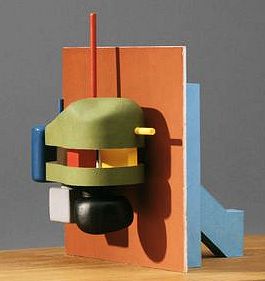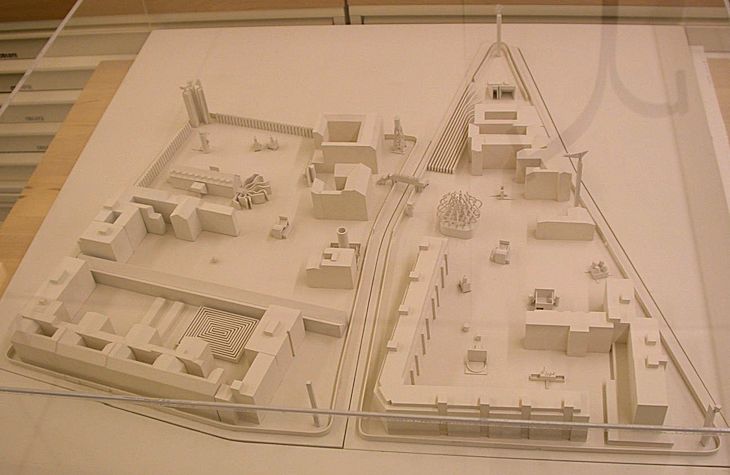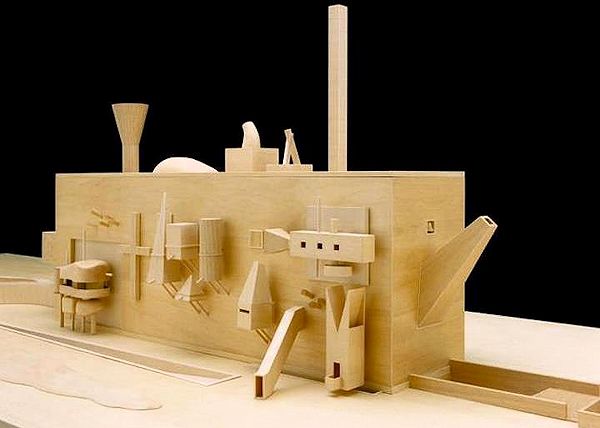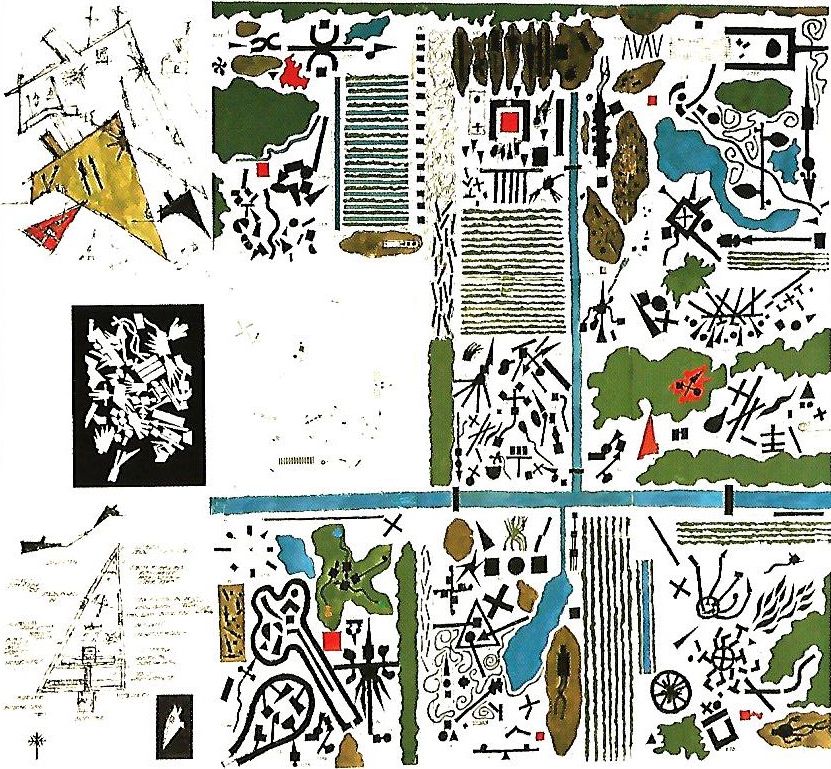There was something jarring about “Sanctuaries.” The exhibition consisted of models and drawings that were among the last works of architect John Hejduk, who constructed few buildings but was an influential presence during his twenty-five years at the Cooper Union school of architecture, where he was dean until his death, in 2000. There his star students included Daniel Libeskind, Elizabeth Diller, Stan Allen, and Toshiko Mori. Today, Hejduk’s work remains as enigmatic as it was during his life. Fearless in its personalized poetics, figuration, and overt spirituality, it’s the type of stuff that makes those raised on postmodern doubt want to cringe and shiver from the seemingly saccharine naïveté--which is partially why his oeuvre provides an unsettling and important counterpoint to current architecture culture, where “radical” is a corporate business model.
Hejduk’s career began with building designs developed from the reductive geometry of a nine-square grid, in which elements were based on an abstract architectural syntax. Going on to question this early formalist approach, a move that evoked Ludwig Wittgenstein’s reevaluation in Philosophical Investigations of the logical positivism of Tractatus, he created a subjective, associative language of architecture using what he called masques. Hejduk eschewed traditional typology for anthropomorphic and animal-like buildings that were hybrids of simple abstract geometries and idiosyncratic figuration. These operated like Trojan horses, providing the architect with vacant protagonists through which to sneak in emotion and meaning. For Hejduk, the masque represents the core of architecture: It’s that space that mediates between inside and outside—an architectural figment meant to be embodied from within as much as it is from without. Hejduk in turn contradicted the modernist delight in functionalism and the subjugation of figure--something first exemplified by his model Wall House, 1969, in which each room resembles an exposed internal organ suspended against the background of a square wall. Almost all of Hejduk’s projects seem to float, removed from their context, as if the sites were primarily shifting mental constructs.
Later these investigations of figure and geometry turned to self-conscious narrative structures about memory and iconography: Hejduk curated himself, repositioning his previous work. Berlin Masque, 1981, for example, is an architectural model of two adjacent walled-in camps in which architectural figures and buildings (some of them Hejduk’s earlier projects) seem to wander aimlessly in captivity. Cathedral, 1996, is the architect’s most impressive late project to recycle his earlier designs. The long rectangular volume of a cathedral is transformed on both sides, one side by tacked-on religious iconography, references to his earlier work, and fragments of Le Corbusier’s chapel at La Tourette; and the other by hollow geometric volumes that, seen from the inside of the cathedral, appear to offer views to the sky. Cathedral is a monumental conflagration between abstraction and figuration with the mediating agent of the cathedral’s cross in the center: It’s almost magnetic, pulling together every aspect of Hejduk’s previous work into a single project and an unresolved confrontation. Hejduk becomes his own object of scrutiny again, and for the last time, in A Gathering, 1999, which continues the autobiographical, almost pathological indexing and cataloguing of his oeuvre, presenting an expansive field of silhouetted objects within a picturesque landscape. It seems like a landscape of shadows, and, looking at the unfinished drawing, one surveys all of Hejduk’s attempts to find an architecture that could mediate some sort of poetic resonance, the epic scale of which is both inspiring and heart wrenching.
| |

Wall House 3 1969
| |

Berlin Masque 1981
|



